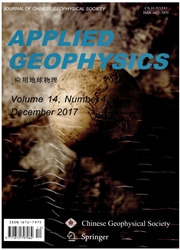

 中文摘要:
中文摘要:
探索地震前兆是一件具有挑战性的研究。本文采用高通滤波的方法,处理分析了来自世界不同位置4个超导重力台站5次大地震前的秒级固体潮重力数据,发现在这些地震发生之前数天内,能够接收到稳定的重力高频扰动信号,其中2008年5月12日的汶川地震前出现一个主频为0.1-0.3Hz的重力扰动,而其他4次地震前出现两个主频为0.12-0.17Hz和0.06-0.085Hz的重力扰动。另一个发现是当地震发生在大陆与海洋板块断裂带时这种重力扰动信号具有远场效应,即重力扰动异常出现在距离震中较远的超导重力仪上,而较近的台站异常较小或没有异常。以上研究结果表明,这种重力扰动信号与地震发生具有较密切的相关性,可作为一种有潜力的临震预报信号;重力扰动信号的远场效应也许能够揭示某些地震发生前地球内部板块之间的相互作用机制。但由于地球上重力固体潮台站分布的非常不均匀,上述结果还需要今后研究更多的样本数据加以证实。
 英文摘要:
英文摘要:
We used high-pass filtering and the Fourier transform to analyze tidal gravity data prior to five earthquakes from four superconducting gravity stations around the world. A stable gravitational perturbation signal is received within a few days before the earthquakes. The gravitational perturbation signal before the Wenchuan earthquake on May 12, 2008 has main frequency of 0.1–0.3 Hz, and the other four have frequency bands of 0.12-0.17 Hz and 0.06-0.085 Hz. For earthquakes in continental and oceanic plate fault zones, gravity anomalies often appear on the superconducting gravimeters away from the epicenter, whereas the stations near the epicenter record small or no anomalies. The results suggest that this kind of gravitational perturbation signals correlate with earthquake occurrence, making them potentially useful earthquake predictors. The far-field effect of the gravitational perturbation signals may reveal the interaction mechanisms of the Earth’s tectonic plates. However, owing to the uneven distribution of gravity tide stations, the results need to be further confirmed in the future.
 同期刊论文项目
同期刊论文项目
 同项目期刊论文
同项目期刊论文
 期刊信息
期刊信息
